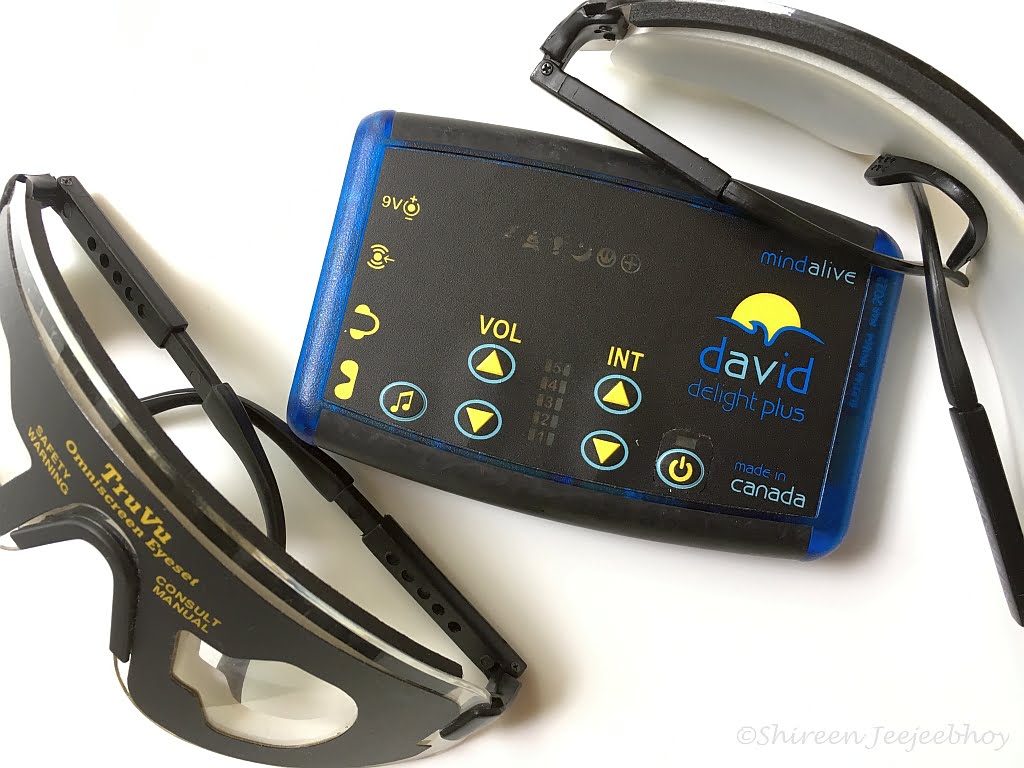A Simpler Explanation
Audiovisual entrainment. Huh? AVE. What’s that?! I’m so used to these terms and AVE being short for audiovisual entrainment, that I forget it all sounds like technobabble to most. So here goes my attempt to explain this neuroplastic treatment better.
What is Neuroplastic?
Neuroplastic?!!! Neuroplastic means the brain’s ability to change and remold itself. A neuroplastic treatment stimulates the brain to repair an injury. Or it can guide the brain into reducing anxiety or improving attention. Basically, neuroplastic treatment is a way to help a person with brain issues, big and small, get better.
I learnt on Wednesday that some health care professionals call tasks such as puzzle-solving “neuroplastic treatment.” Uh, no, tasks are not neuroplastic treatment. Tasks and puzzles, reading and writing, thinking and creating, make the brain work, and in working, the brain will change, but they’re not treatments that repair injury.
Think of it like this:
Tasks work the brain. Tasks fatigue the person. Tasks don’t create energy. They simply fatigue.
Neuroplastic treatments work the brain. Neuroplastic treatments can fatigue the person (at first). But when neuroplastic treatments begin to take effect, they increase energy. Neuroplastic treatments improve brain activity and function. They don’t just fatigue and frustrate. That’s what audiovisual entrainment or AVE does: gives energy and improves function.
I liken the brain to a light bulb — and brainwaves as electricity and the brain cells as an electrical grid. Brainwaves flow along brain cells and produce brain activity. Or, using my analogy, the electricity flows through an electrical grid that lights up the light bulb.
Injury equals wonky brainwaves equals broken brain cells equals a brain that doesn’t work properly.
Injury creates wonky electricity and breaks the electrical grid, making the light bulb flicker, go off, spark on at high intensity, waver, flash off — all rather unpredictably.
Why Neuroplastic Treatment?
The point of neuroplastic treatment is to repair the electrical grid, either permanently or temporarily, so that the electricity can flow along it again and light up the light bulb. The aim is to turn the light bulb on and keep it on.
Audiovisual Entrainment is a Temporary Neuroplastic Treatment
Audiovisual entrainment or AVE is a temporary kind of neuroplastic treatment. It keeps the light bulb working for a little while. The AVE’s flashes of light, pulses of tones, tell the brainwaves or electricity, “Hey, this is the way you need to pulse along the electrical grid. This is the pattern of pulses we need for the light bulb to produce the kind of light we want.”
Audiovisual entrainment works through the eyes and ears. Think of a pair of mirrored sunglasses. You put on the “sunglasses” — that is, eyesets. With them on, what you see looks like morning light when your eyes are closed. You can tell it’s light out but all is still dark in your visual world. But when you begin a session, you’ll see patterns of light. Sometimes the patterns vary; sometimes they’re quick; sometimes they’re slow. The patterns of light synchronize with the pulse tones coming through either headphones or earbuds. Both the headphones and eyesets plug into a black box. And the box has curved sides so it’s easy to hold. It has raised buttons so that they’re easy to find with eyes closed.
Kinds of Audiovisual Entrainment
At the top of the black box are five pictograms.

Five Pictograms:
Lightning for Energize
Yoga for Meditate
Light Bulb for Brain Booster
Crescent Moon for Sleep
Happy Face for Feeling Better
Pictogram One: A lightning bolt for energy. All these sessions tell your brainwaves, “Hey, create electricity that makes your brain shine bright. Make the light bulb fill every corner with light that awakens you!”
Pictogram Two: a yoga pose for calming meditation. All these sessions tell your brainwaves, “Create calm, zen-like electricity. Make the light bulb of your brain glow with a soft, warm light.”
Pictogram Three: a light bulb to boost your brain power. All these sessions tell your brainwaves, “Be energetic but relaxed. Make the light bulb produce steady light to start and finish that task and not be as frustrated.”
Pictogram Four: a crescent moon for sleep. All these sessions tell your brainwaves, “Sleep already! Drop the electricity down into a deep, steady snooze-inducing hum that slowly turns the brain light bulb off in a way that’ll clean and repair the electrical grid.”
Pictogram Five: happy face for feeling better. All these sessions tell your brainwaves, “Feel better!” They do this in different ways, depending on what you need. One session says, “Get the light bulb to smile.” Another says, “Dial down the pain-inducing high-intensity light of the light bulb so the light doesn’t hurt as much anymore.”
To summarize, audiovisual entrainment or AVE can give you energy, calm or relax you, boost your brain power, help you sleep, and make you feel better mentally or physically.
How Audiovisual Entrainment Works
To start a session, you grab a glass of water and make sure it’s beside you. Have a drink. You plug in the device or run it on battery and position it so it’s easy to use and won’t fall off your lap or the table beside you. You get yourself into a comfortable chair. Or wiggle under the covers in bed. Once you’re comfortable, you press the pictogram button you want. Then you choose the session you want — maybe you’re feeling sluggish and need a big brain boost. Or maybe you’re awake too long into the night and you need your brain to settle into sleep. Then you put on the eyesets. Slip on the headphones. And lie back in a comfortable position. Lastly, press the “go” button. Then let your mind wander and feel your body relax.
Your blood pressure will drop, and the first few times you use it, you may feel dizzy or cold until your brain and body get used to your blood pressure being lowered. Lower blood pressure is good, but it takes time to adjust to it if you have high blood pressure or yo-yoing blood pressure. This is why it’s important to be seated or lying down with water beside you to drink before and after.
Once you start a session, you can adjust the intensity of the light flashes and pulse tones. I’m pretty sensitive, so I had mine way down when I began. As I got used to it, I dialled up the intensity. If the sun is shining on your face, you’ll need a higher light intensity than if using it in a dark room.
Deep Breathing as Part of Audiovisual Entrainment
Deep breathing is a natural way to reduce anxiety. It isn’t sufficient to repair brain injury, but it’s a skill to help anyone during stressful moments. And every session includes a heartbeat. The heartbeat guides your breathing into deeper, slower breathing to reduce anxiety. Breathe in and out on the heartbeat to help you relax. If it bugs the hell out of you, you can turn it off.

Deep Breathing aka
HRV or Heart Rate Variability
Deep breathing makes your heart beat in sync with your breathing. The pink wave is the heart rate, the blue wave is the breathing. As breath inhales, the heart rate goes up; as you exhale, the heart rate goes down. That equals heart rate variability. (This graph is from a different neuroplastic treatment and is produced here only for illustration purposes.)
When the session ends, enjoy the change. Learn how long it lasts and adjust your schedule to take advantage of it. For example, plan your reading for the hour or two after a brain boost session, before the session’s effects wear off. And don’t overdo it. Let your brain rest! Enjoy the session; enjoy the better-functioning brain while it lasts; then accept the rest time until the next day or next.
I hope that makes sense. If not, let me know in the comments or on Twitter, and I’ll rewrite!




